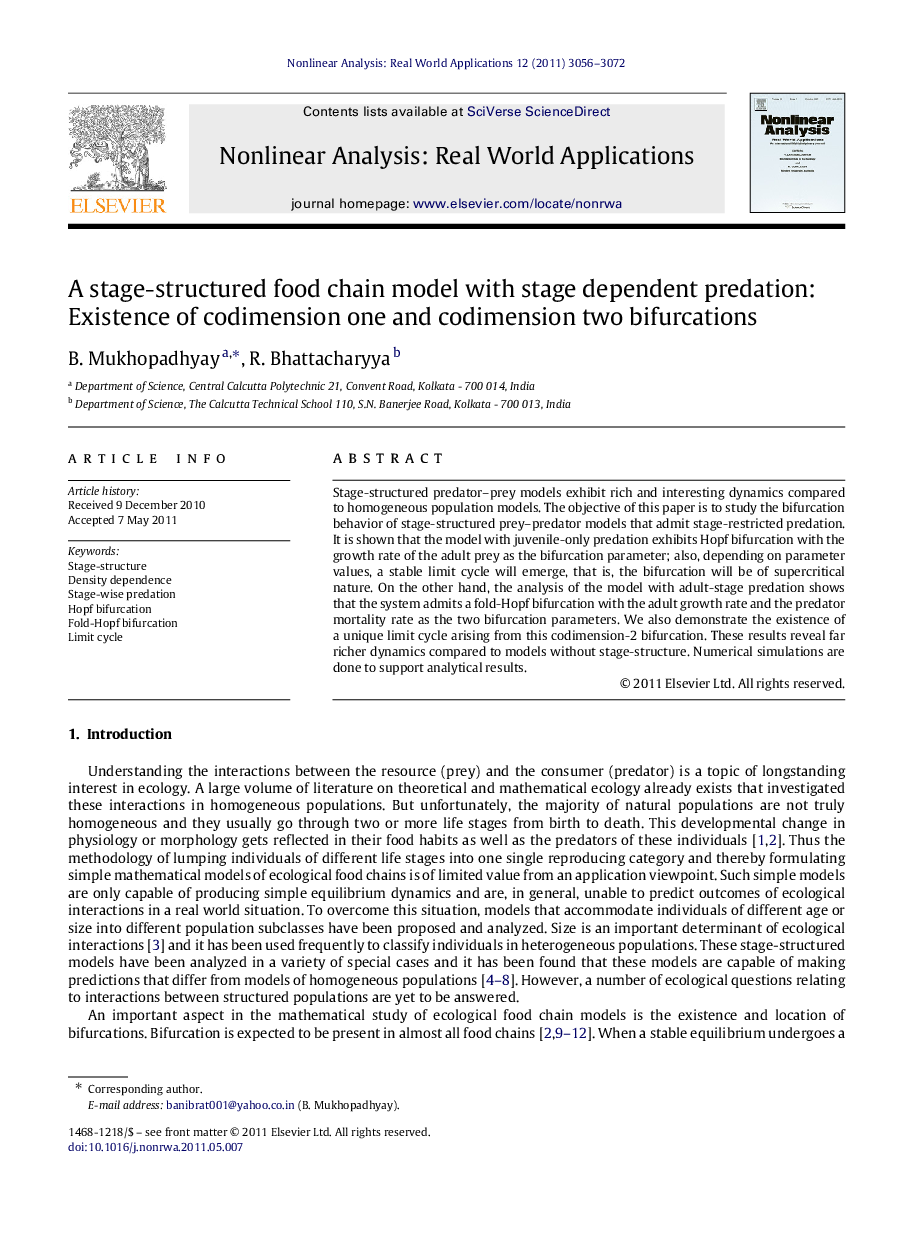| Article ID | Journal | Published Year | Pages | File Type |
|---|---|---|---|---|
| 837634 | Nonlinear Analysis: Real World Applications | 2011 | 17 Pages |
Stage-structured predator–prey models exhibit rich and interesting dynamics compared to homogeneous population models. The objective of this paper is to study the bifurcation behavior of stage-structured prey–predator models that admit stage-restricted predation. It is shown that the model with juvenile-only predation exhibits Hopf bifurcation with the growth rate of the adult prey as the bifurcation parameter; also, depending on parameter values, a stable limit cycle will emerge, that is, the bifurcation will be of supercritical nature. On the other hand, the analysis of the model with adult-stage predation shows that the system admits a fold-Hopf bifurcation with the adult growth rate and the predator mortality rate as the two bifurcation parameters. We also demonstrate the existence of a unique limit cycle arising from this codimension-2 bifurcation. These results reveal far richer dynamics compared to models without stage-structure. Numerical simulations are done to support analytical results.
